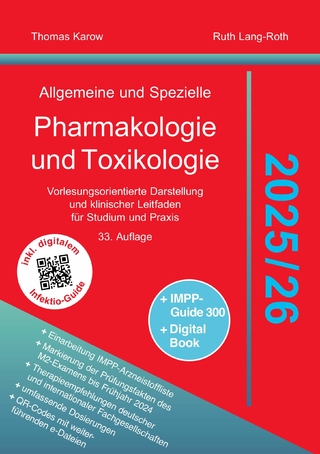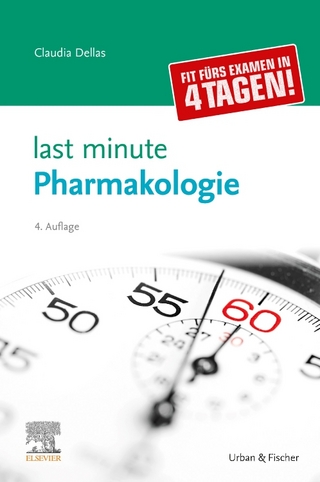
Biological Toxins and Bioterrorism
Springer (Verlag)
978-94-007-5868-1 (ISBN)
This volume provides a reference accessible to scientists, educators, and medical experts alike with an interest in biotoxins, focusing on the major toxins used as bioweapons.
Biological toxins are an important part of our world, a reality with which we need to cope, so in parallel with understanding their mechanisms of action and thereby improving our fundamental knowledge, there are successful efforts to utilize them as therapeutics against some debilitating human and animal diseases. In view of the complexity of different types of biotoxins and the broad range of toxin structure, physiology, utility, and countermeasures including regulatory issues, it was thus aimed to compile a book on biotoxins and bioweapons.
This reference work in the Toxinology handbook series gathers together knowledge from around the globe about naturally inspired and manufactured biological weapons. The authors describe how they work; how authorities may detect their presence, prevent their use, and diagnose their impacts; and the means by which medical and paramedical professionals may treat victims. Also described are how they have been used to further our knowledge and what insights they have given us into evolutionary and physiological processes. Finally, it is also discussed how these toxins can be used as therapeutics and what the implications of such therapeutics are to their use as biothreat agents.
This volume provides a reference accessible to scientists, educators, and medical experts alike with an interest in biotoxins, focusing on the major toxins used as bioweapons. Regulatory agencies will also benefit from the information provided in this book. Some in the intended audience may need to understand how they elicit their effects and how we can defend ourselves against them. Others may be interested in the sometimes colorful histories that surround this subset of biotoxins that can be and, in some cases, have been used as weapons.
Prof P. Gopalakrishnakone is a world leader in the characterization of the structure and function of animal and plant toxins and chemical poisons, which contain highly specific and biologically active components. He has contributed significantly to the body of knowledge regarding the anatomy of snake venom glands and the development of drug candidates from animal toxins. Prof Gopal pioneered the development of the NUS Venom and Toxin Research Programme, which has put NUS at the forefront of toxin research internationally. The technology platform that has been built over the years under the Venom and Toxin Research Programme, coupled with its extensive library of protein and peptides, has enabled Prof Gopal and his team to complete the discovery process of lead candidates in time and to transfer valuable supplementary information to the next discovery steps involving profiling and optimization of lead candidates. The objective is to characterize the venom components and natural toxins at a molecular level and identify promising compounds amenable to the development of novel human therapeutics. Prof Gopal’s lab has identified over twenty peptides with unique medical indications from venom-based proteins with some already under development as therapeutics. His research studies includes structure function studies (toxin detection, biosensors, antitoxins and neutralization factors), toxicogenomics and expression studies, antimicrobial peptides from venoms and toxins and PLA2 inhibitors as potential drug candidate for inflammatory diseases. The techniques he employs include quantum dots to toxinology, computational biology, microarrays and protein chips. He has patented analgesic peptide, anti inflammatory peptide as well as anti rheumatoid arthritis peptides. He is exploring various possibilities of delivery systems for these peptides to target sites and administration of these peptides orally, transdermally, ocular and injections. Prof Gopal has over 100 international peer-reviewed papers in venom and toxin research, drug discovery, biosensors, and toxinogenomics. His research awards include the Outstanding University Researcher Award from the National University of Singapore (1998); Ministerial Citation, NSTB Year 2000 Award in Singapore; and the Research Excellence Award from the Faculty of Medicine, National University of Singapore (2003). His awards in teaching include, Faculty Teaching Excellence Award 2003/4 & NUS Annual Teaching Excellence Award 2003/4. He also received the Faculty Teaching Excellence Award in 2009/10 and the Annual Teaching Excellence Award, NUS FOR 2009/10. He is the President of International Society on Toxinology till 2012, and is a member of the editorial board of Toxicon, the official journal of the International Society on Toxinology. Mahdi Balali-Mood was a lecturer in clinical pharmacology and toxicology at Edinburgh University, UK, 1981-1982. He returned home during the Iraq-Iran war to assist the chemicalcasualties. He was promoted to associate professor in 1984 and full professor of Mashhad University in 1988. His other positions are as follows: founding member and president, Iranian Society of Toxicology (1989-2001), Asia-Pacific Association of Medical Toxicology (1994-2001), clinical toxicology adviser to WHO (1989 to date); member of many national and International organizations including Iranian Academy of Medical Sciences (1991 to date), World Academy of Sciences (1997 to date), Scientific Advisory Board and the working groups of Organization for Prohibition of Chemical Weapons (2004 to date); editor-in-chief, Scientific Journal of Birjand University of Medical Sciences (2002 to date); associate editor, Emerging Health Threats Journal, Forum of Emerging Health Threats, London, 2006 to 2012. Bal Ram Singh, a former professor of biophysical chemistry and Henry Dreyfus Teacher-Scholar at University of Massachusetts Dartmouth, United States, and currently a professor and director of Botulinum Research Center, Institute of Advanced Sciences, has been conducting research for 27 years on the molecular mode of action of botulinum and tetanus neurotoxins, cranberry natural products, Ayurvedic and herbal products. Lyndon Llewellyn is currently the program leader, data and technology innovation at the Australian Institute of Marine Science. He has a technical background in marine biology, biochemistry, and molecular pharmacology and has conducted numerous studies on both natural and artificial chemical toxicants on marine organisms using tools ranging from the molecular to mangrove trees, as well as biodiscovery for biotechnology. He has a particular expertise in organic marine toxins, including saxitoxin, the only marine toxin declared a chemical weapon, which can contaminate seafood, as well as marine and aquatic environments.
Abrin and Immunoneutralization: A Review.- Abrin: A Review.- Aflatoxins.- Aptamers as Antidotes against Toxins.- Artificial Resistance using Antitoxins and Anti-venoms.- Basic Chemistry of Toxins Relevant to Vaccine, Diagnostics, and Countermeasures.- Bioactive Peptides Against Bioterror Agents.- Biological Toxin Detection: A Review.- Biology, Ecology and Evolution of Receptor-Based Toxin Resistance.- Biosecurity and Toxins.- Botulinum Toxins Antidotes.- Botulinum Toxins: A Review.- Cellular Assays for Toxins.- Challenges in Developing Inhibitors Against Toxins.- Cholera Toxin.- Counterfeit Botulinum Medical Products and Risk of Bioterrorism.- Decoy-Receptor-Like Toxin-Binding Proteins and Their Potential Role in Toxin Resistance.- Diagnostics of Botulism.- Evolutionary Traits of Toxins.- Mycotoxins.- Mycotoxins II.- Pheromones and Amphibian Biology.- Public Health Lab Response to Potential Toxin Bioterrorism.- Review on BTW: Toxins and Contemporary Bioterrorism.- Ricin as Bioweapons.- Ricin: A Review.- Toxins and Food Safety.- Toxins Detection.- Toxins of GID Relevance.- The Biology of Chemical Signals as Toxins and in Venoms.
| Reihe/Serie | Biological Toxins and Bioterrorism | 1.10 | Toxinology |
|---|---|
| Zusatzinfo | 95 Illustrations, color; 28 Illustrations, black and white; XXIV, 604 p. 123 illus., 95 illus. in color. |
| Verlagsort | Dordrecht |
| Sprache | englisch |
| Maße | 155 x 235 mm |
| Themenwelt | Medizin / Pharmazie ► Medizinische Fachgebiete ► Pharmakologie / Pharmakotherapie |
| Medizin / Pharmazie ► Pharmazie | |
| Studium ► 2. Studienabschnitt (Klinik) ► Pharmakologie / Toxikologie | |
| Naturwissenschaften ► Biologie ► Biochemie | |
| Naturwissenschaften ► Biologie ► Zoologie | |
| Technik | |
| Schlagworte | drug development • drug discovery • Toxikologie • Toxin • Toxinology • Venom |
| ISBN-10 | 94-007-5868-5 / 9400758685 |
| ISBN-13 | 978-94-007-5868-1 / 9789400758681 |
| Zustand | Neuware |
| Informationen gemäß Produktsicherheitsverordnung (GPSR) | |
| Haben Sie eine Frage zum Produkt? |
aus dem Bereich


